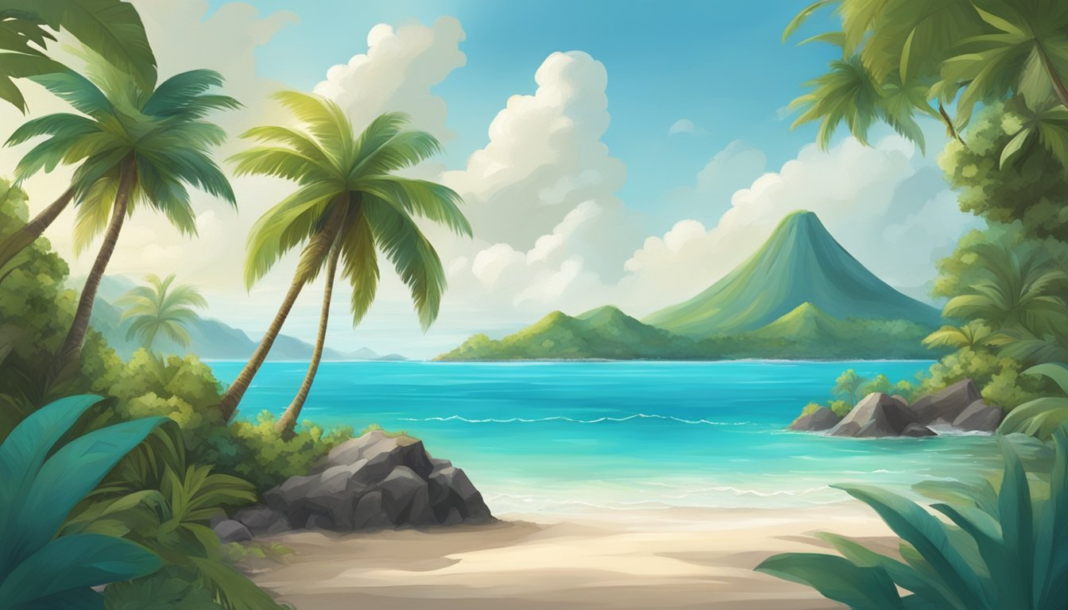The Caribbean region is a vast area that encompasses numerous islands and countries, each with its own unique geography and geology. The region is located in the western part of the North Atlantic Ocean, and it is bounded by the Caribbean Sea to the south and east, the Gulf of Mexico to the west, and the Atlantic Ocean to the north. The Caribbean is home to some of the world’s most beautiful beaches, coral reefs, and tropical rainforests, making it a popular destination for tourists from all over the world.
The geography of the Caribbean is diverse and includes a variety of landforms, such as mountains, valleys, plateaus, and coastal plains. The region is also known for its active volcanoes, which have played a significant role in shaping the landscape over millions of years. The geology of the Caribbean is complex and is the result of tectonic activity, including the collision of the Caribbean Plate with the North American and South American plates. This has resulted in a diverse range of geological formations, including limestone, sandstone, shale, and volcanic rock.
Understanding the geography and geology of the Caribbean is essential for a variety of reasons, including tourism, agriculture, and natural resource management. The region’s unique geology and topography have also contributed to the development of diverse ecosystems, which are home to a wide range of plant and animal species. As such, the study of Caribbean geography and geology is a fascinating and vital field that continues to yield new insights into our planet’s natural history and evolution.
Physical Geography of the Caribbean
The Caribbean is a region located in the western hemisphere, comprising of the Caribbean Sea, its islands, and the surrounding coasts. It is a diverse region with a rich history, culture, and geography. The physical geography of the Caribbean is unique and fascinating, shaped by various geological processes over millions of years.
Island Formation
The Caribbean islands are primarily of two types: volcanic and coral. The volcanic islands were formed by the movement of tectonic plates and volcanic activity, while the coral islands were formed by the accumulation of coral reefs over thousands of years.
The volcanic islands are located in the eastern part of the Caribbean and are characterized by steep mountains and lush vegetation. The Lesser Antilles, which form an arc from the Virgin Islands to Trinidad and Tobago, are a chain of volcanic islands. The Greater Antilles, which include Cuba, Jamaica, Hispaniola, and Puerto Rico, are also volcanic in origin.
Volcanic Activity
Volcanic activity is still present in the Caribbean region, with several active and dormant volcanoes. The most active volcano in the region is Soufriere Hills on the island of Montserrat, which has erupted several times since 1995. The La Soufriere volcano on the island of St. Vincent erupted in April 2021, causing significant damage to the island.
Coral Reefs and Atolls
The coral islands are located in the western part of the Caribbean and are characterized by flat terrain and extensive coral reefs. The Bahamas, which comprise of over 700 islands and cays, are the most extensive coral islands in the region. The coral reefs are home to a diverse range of marine life and are popular destinations for snorkeling and diving.
Atolls, which are circular coral reefs enclosing a lagoon, are also present in the Caribbean. The most famous atoll in the region is the Turneffe Atoll in Belize, which is a popular destination for fishing and diving.
Overall, the physical geography of the Caribbean is a complex and dynamic system shaped by various geological processes over millions of years. The region’s unique geography and natural beauty make it a popular tourist destination and an important area for scientific research.
Geological Features
The Caribbean region is known for its diverse and unique geological features. From tectonic plate boundaries to mountain ranges and mineral resources, the Caribbean has a lot to offer in terms of geology.
Tectonic Plate Boundaries
The Caribbean is situated on the boundary of two major tectonic plates, the North American Plate and the South American Plate. This makes the region prone to earthquakes and volcanic activity. The most active volcanic areas are found in the Lesser Antilles, a chain of islands stretching from the Virgin Islands to Grenada. The most famous volcano in the region is Montserrat’s Soufriere Hills, which erupted in 1995 and has been active ever since.
Mountain Ranges
The Caribbean is home to several mountain ranges, including the Blue Mountains in Jamaica, the Northern Range in Trinidad and Tobago, and the Cordillera Central in the Dominican Republic. These mountain ranges are the result of tectonic activity and are known for their rugged terrain and scenic beauty. The Blue Mountains, for example, are a popular hiking destination and are known for their coffee plantations.
Mineral Resources
The Caribbean is rich in mineral resources, including bauxite, gold, and oil. Bauxite, which is used to make aluminum, is found in Jamaica, Guyana, and Suriname. Gold is found in Guyana and Suriname, while oil is found in Trinidad and Tobago and Venezuela. These resources have played a significant role in the region’s economy and have attracted foreign investment.
In conclusion, the Caribbean’s geological features are diverse and unique. From tectonic plate boundaries to mountain ranges and mineral resources, the region has a lot to offer in terms of geology.
Frequently Asked Questions
How many countries are there in the Caribbean region?
The Caribbean region comprises 13 sovereign island nations and 12 dependent territories of various European powers. These countries are located in the Caribbean Sea, which is bordered by the Atlantic Ocean to the east and the Gulf of Mexico to the west.
Can you list the Caribbean islands that are formed primarily of limestone?
Some of the Caribbean islands that are primarily formed of limestone include Barbados, the Cayman Islands, and the Turks and Caicos Islands. Limestone is a sedimentary rock that is formed from the accumulation of shells, coral, and other organic matter.
What are the main geographical features of the Eastern Caribbean islands?
The Eastern Caribbean islands are characterized by mountainous terrain, lush rainforests, and pristine beaches. The islands are part of the Lesser Antilles, a chain of islands that extends from the Virgin Islands in the north to Trinidad and Tobago in the south.
Where exactly is the Caribbean Sea situated in relation to the world’s major bodies of water?
The Caribbean Sea is a part of the Atlantic Ocean and is located between Central and South America, and the Caribbean islands. The sea is bounded by the Yucatan Peninsula of Mexico to the west, the Greater Antilles to the north, and the Lesser Antilles to the east.
What are some key geological characteristics of the Caribbean islands?
The Caribbean islands are primarily composed of volcanic and sedimentary rocks, with some islands featuring limestone and coral reefs. The region is also prone to earthquakes and volcanic activity, as evidenced by the eruption of Mount Pelee in Martinique in 1902.
What unique geological phenomena can be observed in the Caribbean Sea’s structure?
The Caribbean Sea is home to several unique geological features, including the Puerto Rico Trench, which is the deepest point in the Atlantic Ocean, and the Cayman Trough, which is the deepest point in the Caribbean Sea. The sea is also home to several active underwater volcanoes and hydrothermal vents.

